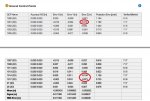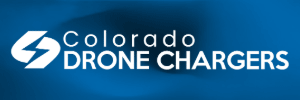- Joined
- Aug 8, 2019
- Messages
- 4
- Reaction score
- 1
Hala, mi nombre es Nahuel, soy de Argentina.
Trabajo en Agrimensura y Topografía, y hemos adquirido un Anafi Work, el cual hemos esado probando para ver los resultados que pueden obtener tanto en planimetria (Coordenadas X, Y) como en altimetria (Coordenada Z).
Teniamos temor, ya que la deformación del lente es importante para este tipo de trabajos.
Los resultados que obtuvimos en X, Y fueron buenos, pero en Z tuvimos algunos problemas, ya que hemos tenido diferencias de más de 10 cm en algunos sectores (principalmente en zonas donde se produjeron desniveles). (las pruebas se realizan con vuelos de 45 m de altura)
Mi consulta es ¿alguien tiene experiencia de este tipo de trabajos con este equipo? ¿Qué resultados han obtenido? ¿Es confiable este equipo para trabajar en topografía?
desde ya les agradezco.
Trabajo en Agrimensura y Topografía, y hemos adquirido un Anafi Work, el cual hemos esado probando para ver los resultados que pueden obtener tanto en planimetria (Coordenadas X, Y) como en altimetria (Coordenada Z).
Teniamos temor, ya que la deformación del lente es importante para este tipo de trabajos.
Los resultados que obtuvimos en X, Y fueron buenos, pero en Z tuvimos algunos problemas, ya que hemos tenido diferencias de más de 10 cm en algunos sectores (principalmente en zonas donde se produjeron desniveles). (las pruebas se realizan con vuelos de 45 m de altura)
Mi consulta es ¿alguien tiene experiencia de este tipo de trabajos con este equipo? ¿Qué resultados han obtenido? ¿Es confiable este equipo para trabajar en topografía?
desde ya les agradezco.





